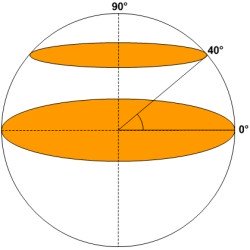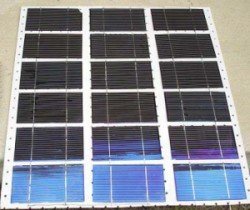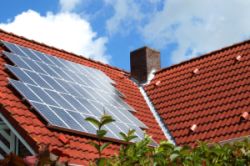Solar Energy For Homes
The available amount of solar energy for homes in your area will be a factor in your choice of residential solar systems.
Residential solar power systems can heat, power, and light your home. But how do you decide which type of system is right for you?
One factor to consider is your home's solar potential.
What is solar potential? It is simply the available amount of solar power for homes in your region as well as your home's specific location.
The amount of sunlight your home receives will vary due to many reasons, but the three most significant reasons for this variation are...
- Latitude
- Climate
- Site-Specific Factors
Latitude
Where your home is located is the main factor that determines the amount of sunlight it will receive each day. Your home's location relative to the Earth's equator is denoted by its latitude.
 Solar Potential is Determined by Latitude
Solar Potential is Determined by LatitudeLatitude is a location's angular measurement north or south of the equator ranging from 0° to 90°. At the equator, latitude is 0°. At the North or South poles, the latitude is 90°.
Locations that are closer to the equator receive more sunlight than those that are further away.
Also, due to the Earth's 23.5° rotational tilt, the amount of sunshine a particular latitude receives changes with the seasons. In April through September, the Northern hemisphere is tilted towards the Sun and will receive more sunlight than during other months of the year.
Latitude can impact the type of solar energy solutions best suited for your home.
For example, homes located in lower latitudes will receive more sunlight throughout the year which will result in more moderate temperatures. As a result, solar electricity solutions are more applicable than solar heating solutions in those regions.
As you can see, latitude is also the main factor that determines a region's climate.
Climate
Climate will also impact the amount of sunshine your home receives.
Climate refers to the long-term weather patterns of a specific region.
Understanding your region's climate is important during the design of your system. Some climate factors to consider are...
- Precipitation
- Temperature
- Cloud Cover
- Wind
Climate factors can impact the performance of your system as well as be a factor in how the equipment is installed.
For example, if you live in a windy climate and you are planning to install solar power panels or solar collectors, you will need to use heavy-duty mounting equipment to ensure the equipment can withstand the strong winds in your region.
Site-Specific Factors
Home solar power systems can also be impacted by site-specific factors. Examples of site-specific factors include adjacent buildings, mountains, and trees.
You can use a sun chart to plot the amount of direct sunlight you can expect over the course of a day. You can also add a skyline to your sun chart which will take into account any site-specific impediments to the amount of direct sunlight you have available.
Site-specific factors can impact where you place your solar equipment.
For example, if you are interested in outdoor solar lighting, you want to make sure that the lights are placed in areas where trees or walls will not block the sunlight from hitting their photovoltaic panels.
Solar Energy for Homes
If you're interested in residential solar energy, understanding your home's solar potential can help you decide which types of solar energy are best suited for you.
Home > Getting Started with Solar Energy > Solar Energy for Homes



